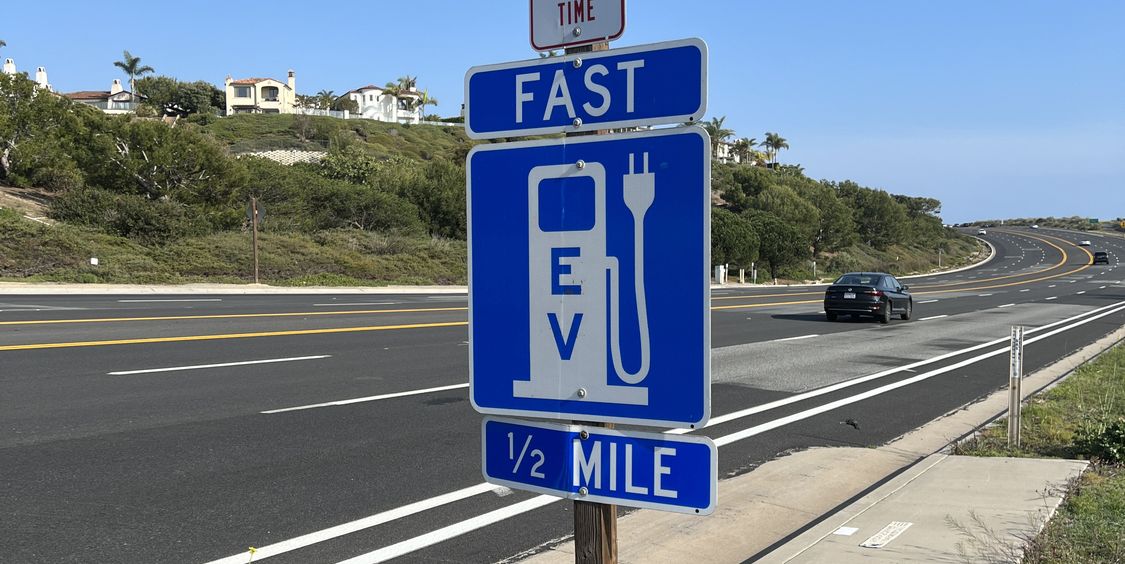10 Ways to Squeeze the Most Driving Range from an EV

OntheRunPhotoGetty Images
Electric-vehicle drivers might be feeling smug these days as they watch gas prices soar higher than the Himalayas, but everyone who pilots a car powered by electrons—and that includes us—shares one particular concern: range. How far you can drive on a single charge matters big time. It takes significantly longer to re-juice an EV’s battery than it does to fill a gas tank, as EV owners well know. On longer trips it’s also inconvenient and stressful to find places to recharge, as there are far fewer charging stations than gas stations. They don’t call it range anxiety for nothing.
There is an app for that, but you can save yourself time, worry, and dollars by utilizing the following expert techniques to net you the most range from each recharge of your EV’s battery.
Drive Gently
This is the oldest technique in autodom: Acceleration uses energy, whether you’re driving a gasoline-powered vehicle or an EV. And the harder you accelerate, the more energy you suck out of the battery. Which is why you want to use as little energy to get up to cruising speed as possible. Whenever traffic allows, drive as if there’s an egg between your foot and the accelerator pedal. In other words, accelerate gradually and resist the temptation to push hard on the accelerator pedal. This may be difficult for some EV drivers to resist, since off-the-line acceleration is so strong—and so much fun—in most EVs. But watch that power meter in the instrument cluster. The lower you can keep that bar or needle, the less energy you’re using to get to a given speed.
Use Regenerative Braking in Town
Unlike nonhybrid gasoline cars, EVs can recapture significant amounts of the energy used to get them up to speed as they slow down again. The principle behind regenerative braking (known as “regen”) is that as soon as the driver lifts off the accelerator, the electric motor switches into a generator, slowing the car as the wheels spin it and returning energy to the battery. Some EVs have adjustable lift-pedal regen, and the strongest setting usually enables “one-pedal” driving—where there’s little need to use the brakes in city or suburban traffic. Most EVs still do trigger regen when you press the brake in a milder regen setting, so you may well be recovering energy so long as you don’t brake hard, blow past the regen system, and engage the standard friction brakes. The high-regen one-pedal setting is the most efficient mainly because it removes the guesswork about where that max-regen point ends and the friction-braking point starts.
Plan Ahead
Watching what’s up the road—a slowing car, a light turning yellow, traffic clotting up—enables you to lift off the accelerator pedal early, coasting down to slow the vehicle rather than accelerating up to the bottleneck and then braking hard. Planning ahead enables you to make the most of one-pedal driving, which eliminates an electric car’s tendency to “glide” when power is removed and increases the amount of regenerative braking—so drivers only rarely need to apply the brake pedal. Instead, virtually all acceleration and deceleration is done by modulating the accelerator pedal. This is good training for watching what’s developing up ahead, a good practice no matter what type of vehicle you’re driving. Coasting down to a stop using regen returns the maximal amount of energy to the batteries. Some makers even offer eco-coaching guidance to show how much of the available energy was recaptured.
Precondition the Car
One part of planning ahead is to heat or cool an EV’s cabin while it’s still plugged in and charging. With many owners installing Level 2 home chargers this is an easy thing to do. Preconditioning uses grid electricity to get the cabin temperature to where you want it, rather than battery range. This can be set up and controlled through the car’s smartphone app and, if your schedule is consistent, you can set it for a given departure time for as many days a week as you need. In extreme weather, many EV batteries also benefit from preconditioning, because it sets them at the optimum temperature for max efficiency the moment you start to drive.
Keep Tires Properly Inflated
This one is shared with gasoline cars: Low tire pressure increases gas consumption due to greater rolling resistance. For EVs with low-rolling-resistance tires, this is especially crucial to ensure the tires are inflated enough to reduce their contribution to drag. Read the tire-pressure settings (usually on a label in the left-front door jamb), keep a tire-pressure gauge in the glove compartment, and use it regularly.
Keep Your Speed Reasonable
EVs are far more energy-efficient than gasoline cars, which waste the bulk of the energy in their gasoline in generating heat and noise. But higher speeds have a significant impact on energy consumption of all cars, and especially EVs. Above roughly 30 mph, any car uses more energy to push aside air than it does to accelerate its mass to speed: the energy required to overcome wind resistance rises exponentially with the square of the speed. This means you use a lot more energy at 80 mph than at 65 mph.
You don’t want to be that guy holding up a lane of traffic, but even cutting 5 mph off your freeway speed—perhaps from 75 mph to 70 mph—will save you several percent on energy usage. A few EVs now offer an option in their navigation that chooses the route with the lowest overall energy consumption. Those routes aren’t necessarily the quickest or the shortest, but if you have the time, back roads often drain less energy than interstate highways running at 20 mph faster.

zorazhuangGetty Images
Use the Cruise
Cruise control has evolved into a very sophisticated software-driven feature. Its ability to make minute adjustments in engine speed and gearing ensure it’s virtually always more energy-efficient than our big fat foot on a pedal trying to do the same thing. In the case of EVs, that difference can matter more if the car has predictive cruise—which makes adjustments in speed based on what it knows is coming, whether that’s an exit that requires slowing down for or a hill that requires extra power delivered gradually. We’ve made it a habit to lock-in every EV’s adaptive cruise control on highways, simply because metering electrons is better done by computers than by us. And we’re fine with that.
Try Eco Mode
Virtually all cars now have more than one driving mode, and generally there’s an Eco mode that reduces energy consumption by reducing throttle response and acceleration rates, turning down the climate control, and sometimes even limiting top speed. We’ve found Eco modes vary a lot among different models; some are only noticeable at the margins, others are close to intolerable if you want to keep up with traffic. Test yours out; many EVs will show an immediate increase in Miles Remaining if you switch into it.
Tune Your Climate Control
Climate control—heating and cooling the cabin—uses more energy than all the other accessories combined, but it’s an area some drivers forget while trying to cut energy use. Some EVs now have a driver-only mode that directs cool or warm air only to the driver, rather than trying to keep the entire cabin at the same temperature. Of course, the oldest EV trick is to use your seat heater and steering-wheel heater in cold temperatures. It’s well known that if your hands and your backside feel warmer, you do, too. Keep the cabin temperature five degrees above (in summer) or below (in winter) where you’d normally put it, and either direct the air vents toward you or use those heaters. You may not even notice the difference.
Coast When You Can
A few EVs enable the driver to disengage regen entirely, which allows the car to sail along as if it were in neutral. It’s an eerie feeling at first, as a car optimized for low rolling resistance will glide an amazingly long way without losing much speed. That makes this technique inadvisable in dense city and suburban traffic, but it works beautifully on lesser traveled roads and on interstates—so long as you avoid using it on downgrades and don’t work the brakes too hard. In cars with one-pedal driving capability, you can get the car into a coasting mode with sensitive use of the accelerator—by holding it at the point between acceleration and regen-induced deceleration. But never, ever shift your EV into “neutral” to get it to coast.
This content is created and maintained by a third party, and imported onto this page to help users provide their email addresses. You may be able to find more information about this and similar content at piano.io



